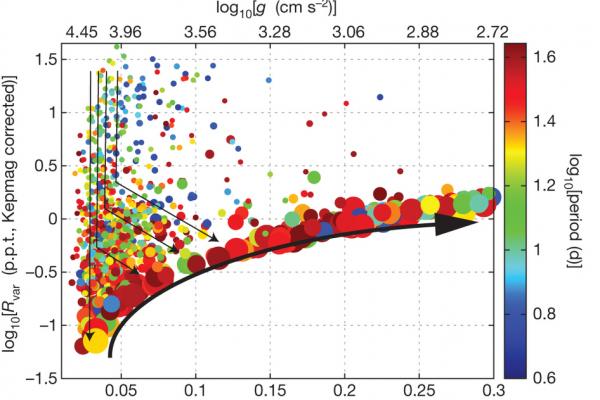
Convection in Cool Stars, as Revealed through Stellar Brightness Variations
Fabienne Bastien - Penn State University
As a result of the high precision and cadence of surveys like MOST, CoRoT, and Kepler, we may now directly observe the very low-level light variations arising from stellar granulation in cool stars. Here, we discuss how this enables us to more accurately determine the physical properties of Sun-like stars, to understand the nature of surface convection and its connection to magnetic activity, and to better determine the properties of planets around cool stars. Indeed, such sensitive phtotometric “flicker” variations are now within reach for thousands of stars, and we estimate that upcoming missions like TESS will enable such measurements for ~100,000 stars. We present recent results that tie “flicker” to granulation and enable a simple measurement of stellar surface gravity with a precision of ~0.1 dex. We use this, together and solely with two other simple ways of characterizing the stellar photometric variations in a high quality light curve, to construct an evolutionary diagram for Sun-like stars from the Main Sequence on towards the red giant branch. We discuss further work that correlates “flicker” with stellar density, allowing the application of astrodensity profiling techniques used in exoplanet characterization to many more stars. We also present results suggesting that the granulation of F stars must be magnetically suppressed in order to fit observations. Finally, we show that we may quantitatively predict a star’s radial velocity jitter from its brightness variations, permitting the use of discovery light curves to help prioritize follow-up observations of transiting exoplanets.
Coffee and Donuts served at 3:30 in 4054 McPherson Laboratory.
